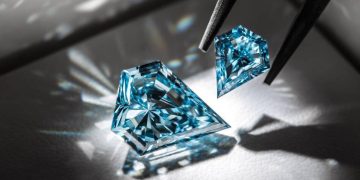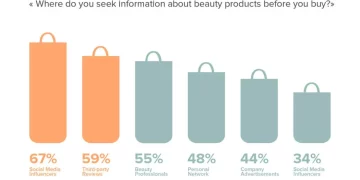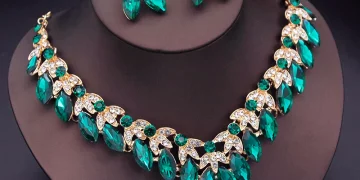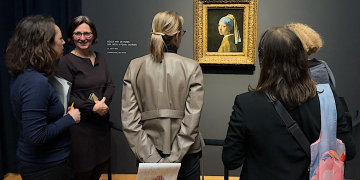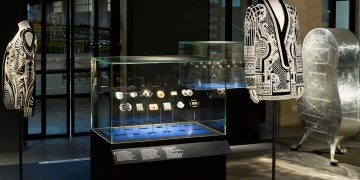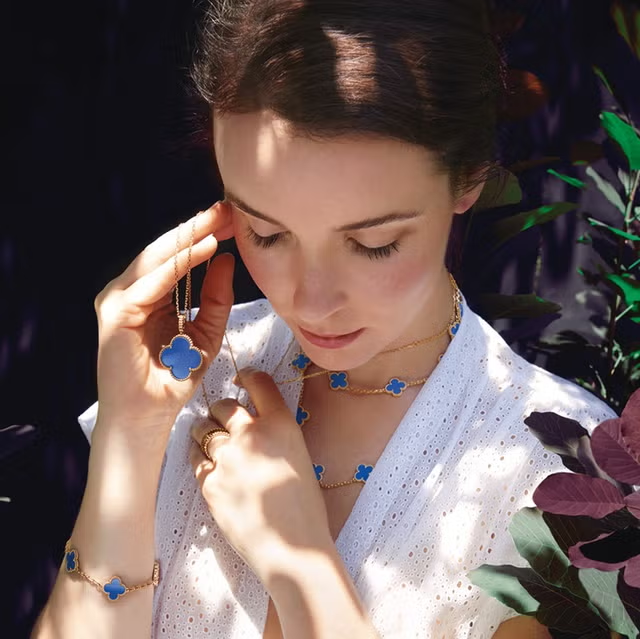The jewelry industry has long been associated with timeless craftsmanship, intricate artistry, and personal expression. Traditionally, jewelers have relied on their skills, creativity, and centuries-old techniques to create masterpieces that have been passed down through generations. However, as the world becomes more technologically advanced, the question arises: Can artificial intelligence (AI) disrupt traditional jewelry design and production methods?
Artificial intelligence, a branch of computer science designed to simulate human intelligence, has already begun transforming many industries, from healthcare to finance, and now, it’s making its way into the realm of jewelry design and manufacturing. While AI is still in its early stages in the jewelry sector, its potential to revolutionize how jewelry is conceived, designed, and produced is undeniable. This article explores how AI could potentially disrupt the jewelry industry and what it means for designers, manufacturers, and consumers.
1. AI in Jewelry Design: Redefining Creativity
A. Automated Design Generation
One of the most significant ways AI could disrupt jewelry design is through the generation of design ideas. Traditionally, jewelry designers draw inspiration from nature, art, culture, and their own imagination, and they rely on their technical skills to bring these ideas to life. With the advent of AI, however, designers can now leverage AI tools to generate design concepts based on data-driven insights.
AI-powered design software can analyze thousands of historical design elements, trends, and consumer preferences to propose design suggestions that match specific tastes. This could significantly reduce the time spent on brainstorming and exploring different design ideas. Tools like Generative Adversarial Networks (GANs) can generate unique jewelry designs based on inputs such as style preferences, material types, or even specific gemstones, offering designers a broad range of possibilities that may not have been immediately considered.
In addition, AI can assist in optimizing designs by suggesting adjustments to improve aesthetics or functionality. For instance, AI algorithms can analyze a design’s proportions, symmetry, and material efficiency, ensuring that the final piece not only looks good but is also structurally sound.
B. Personalization at Scale
One of the most exciting ways AI is reshaping jewelry design is by enabling mass personalization. Traditionally, custom jewelry pieces have been costly and time-consuming due to the handcrafting involved. AI, however, has the potential to democratize the process of customization. With AI-driven design tools, consumers can directly influence the design of their jewelry, tailoring pieces to their personal style, preferences, and emotions.
For example, AI can analyze a customer’s previous purchases, style choices, and preferences (such as favorite gemstones or metals) to suggest jewelry designs that are likely to resonate with them. AI could also allow users to input certain desires, such as a particular color scheme, design motif, or personal symbol, and instantly receive multiple customized designs that fit those criteria.
This level of personalization at scale could significantly enhance the customer experience, allowing for the creation of unique jewelry pieces without the traditional high costs and lengthy production times.
2. AI in Jewelry Manufacturing: Automation and Precision
A. 3D Printing and Additive Manufacturing
AI plays a crucial role in the development of 3D printing in jewelry manufacturing. 3D printing (also known as additive manufacturing) allows for the creation of intricate jewelry designs that would be impossible or prohibitively expensive to produce with traditional methods. AI can enhance 3D printing by optimizing designs for material usage and structural integrity, reducing waste and improving overall production efficiency.
AI-powered software can help generate complex, intricate designs that can be printed directly in various metals, such as gold, silver, or platinum. This is particularly important for custom jewelry, where consumers demand one-of-a-kind pieces. By using AI to control the 3D printing process, jewelers can ensure precision and minimize errors, creating pieces that meet the highest standards of craftsmanship.
Moreover, AI can automate the entire design-to-production process, making it possible to produce high-quality jewelry at a much faster pace than traditional handcrafting methods. AI-driven machines can perform tasks like polishing, casting, stone setting, and even engraving, reducing human labor and increasing efficiency in the production process.
B. AI-Driven Quality Control
Quality control is a critical aspect of jewelry manufacturing, as even the smallest defect can affect a piece’s aesthetic appeal and value. AI can significantly enhance this process by automating inspections and ensuring that each piece meets the required standards. AI algorithms can be trained to identify imperfections, inconsistencies, and flaws in jewelry pieces that the human eye may overlook.
AI-powered imaging systems, for example, can detect minute variations in texture, color, and stone settings. These systems can also ensure that diamonds are set securely or that gemstones are aligned according to the design’s specifications. By automating quality control, AI not only improves the accuracy of inspections but also speeds up the production process, allowing for higher throughput and faster delivery times.
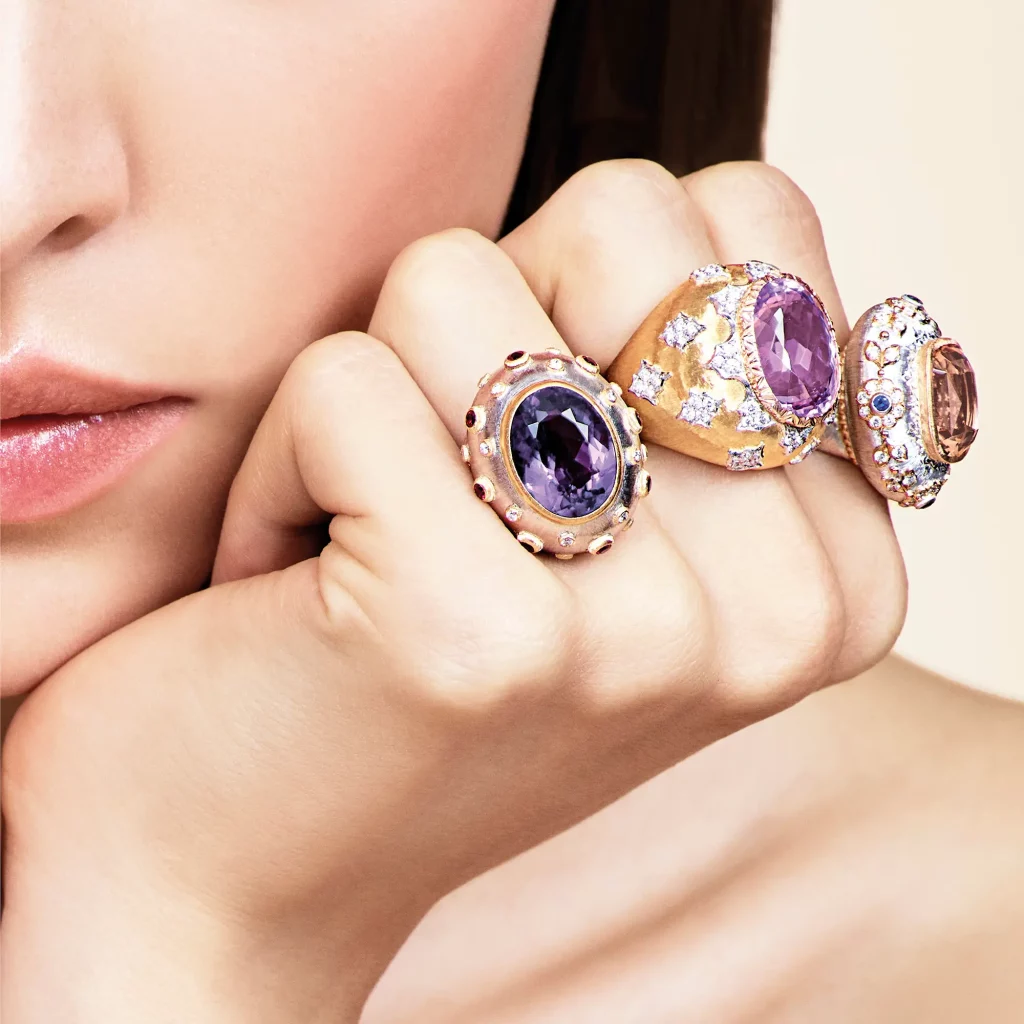
3. AI in Jewelry Marketing and Consumer Interaction
A. AI-Enhanced Customer Experience
The role of AI extends beyond design and manufacturing; it also plays a crucial role in enhancing the consumer experience. For jewelry brands, AI can be used to improve the way consumers interact with their products both online and offline.
For instance, AI-powered chatbots can provide personalized shopping experiences for customers, recommending jewelry based on their style preferences, budget, and occasion. AI can analyze a customer’s online behavior (such as the items they view or add to their cart) and make real-time suggestions, thereby increasing conversion rates.
Additionally, AI can assist in virtual try-ons using augmented reality (AR). Consumers can upload a photo or use their device’s camera to see how a piece of jewelry would look on them, helping them make more confident purchasing decisions. The integration of AI with AR technology allows for a more immersive and personalized shopping experience, bridging the gap between the physical and digital worlds.
B. Predictive Analytics for Market Trends
Another significant advantage of AI in jewelry marketing is its ability to use predictive analytics to anticipate future market trends. AI algorithms can analyze vast amounts of data from various sources, including consumer behavior, social media trends, and sales data, to predict which jewelry styles, materials, and designs are likely to be in demand.
By leveraging AI for market trend forecasting, jewelry brands can optimize their collections, better align with customer preferences, and stay ahead of the competition. Predictive analytics also enables brands to forecast demand more accurately, reducing overproduction and excess inventory while ensuring they meet consumer expectations.
4. Challenges and Limitations of AI in Jewelry Design and Production
While AI offers numerous advantages for the jewelry industry, there are also challenges and limitations to consider.
A. Lack of Human Touch and Artistry
One of the key elements of traditional jewelry design is the human touch—the skill, creativity, and artistry of a designer. AI-generated designs may be able to mimic patterns or create symmetrical pieces, but they lack the emotional depth and unique flair that a human designer can bring. Consumers often value jewelry not just for its aesthetic appeal but for the story behind it, the personal connection to the creator, and the craftsmanship involved. AI, while highly efficient, may struggle to replicate this emotional resonance.
B. Cost of Implementation
For many jewelry businesses, especially smaller brands, implementing AI-driven systems and technologies can be prohibitively expensive. From purchasing AI software to training employees to operate advanced technologies, the initial costs can be a barrier. While AI can ultimately lead to cost savings in production, the upfront investment may not be feasible for all companies, particularly in the luxury jewelry market, where handcrafted pieces are still highly valued.
C. Ethical Concerns
As AI becomes more ingrained in jewelry design and production, ethical concerns will arise regarding data privacy, job displacement, and the impact on traditional craftsmanship. The automation of manufacturing processes could lead to job losses in certain sectors of the jewelry industry, such as casting, polishing, and setting, raising concerns about the future of artisan work.
Conclusion: AI’s Transformative Potential in the Jewelry Industry
AI has the potential to significantly disrupt traditional jewelry design and production methods, offering benefits in design creativity, manufacturing efficiency, and customer interaction. By automating labor-intensive tasks, enhancing the design process, and personalizing customer experiences, AI can help jewelers stay competitive in a rapidly changing market. However, the technology’s full potential will be realized only when it is used in harmony with human artistry, ensuring that the jewelry created is not only efficient but also meaningful and beautiful.
While AI may never fully replace the traditional craftsmanship and artistry that defines high-end jewelry, it is clear that it will continue to shape the future of the industry. Embracing AI, while maintaining a respect for craftsmanship and heritage, may well be the key to unlocking a new era of innovation in the world of jewelry design and manufacturing.



